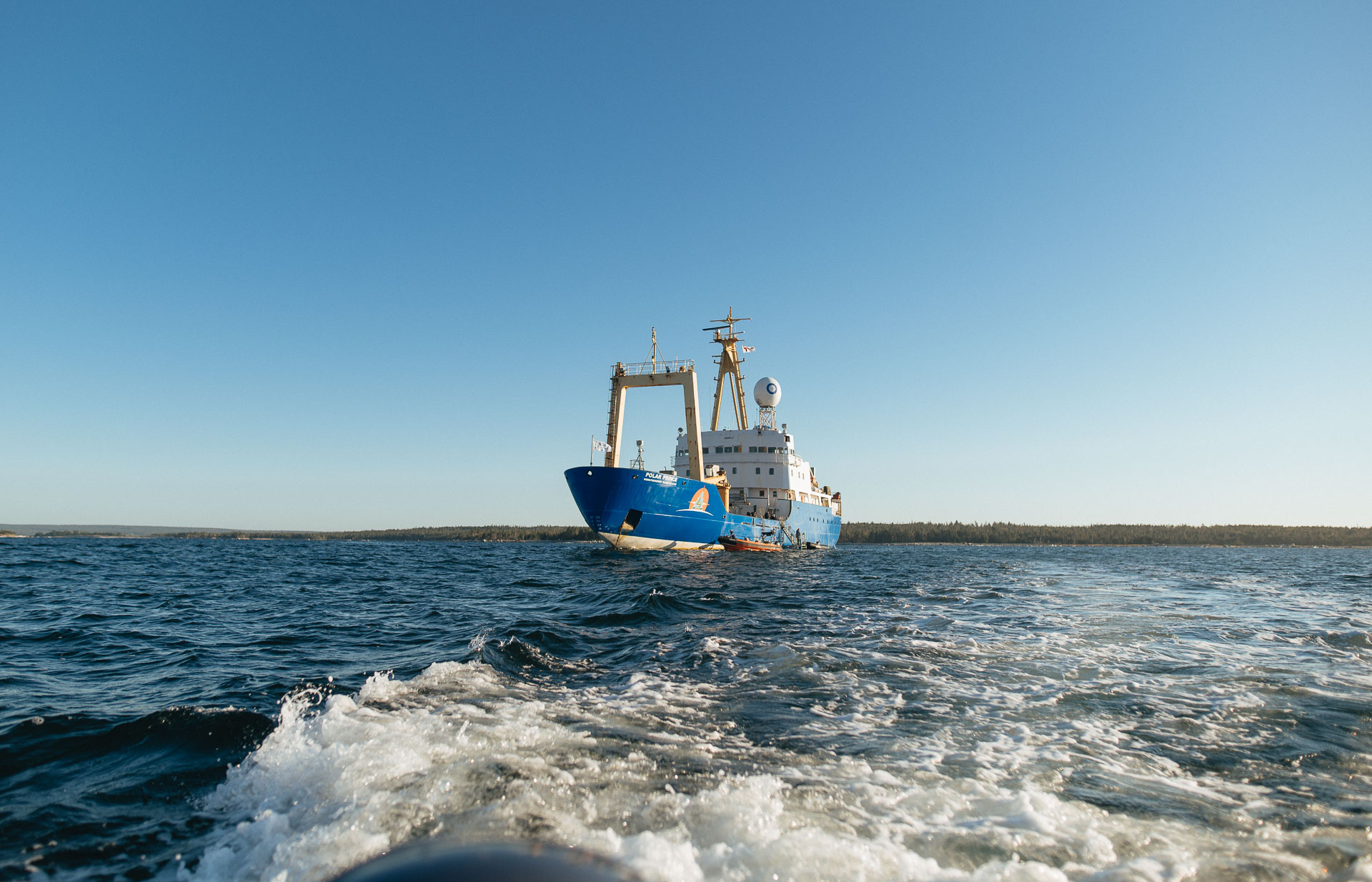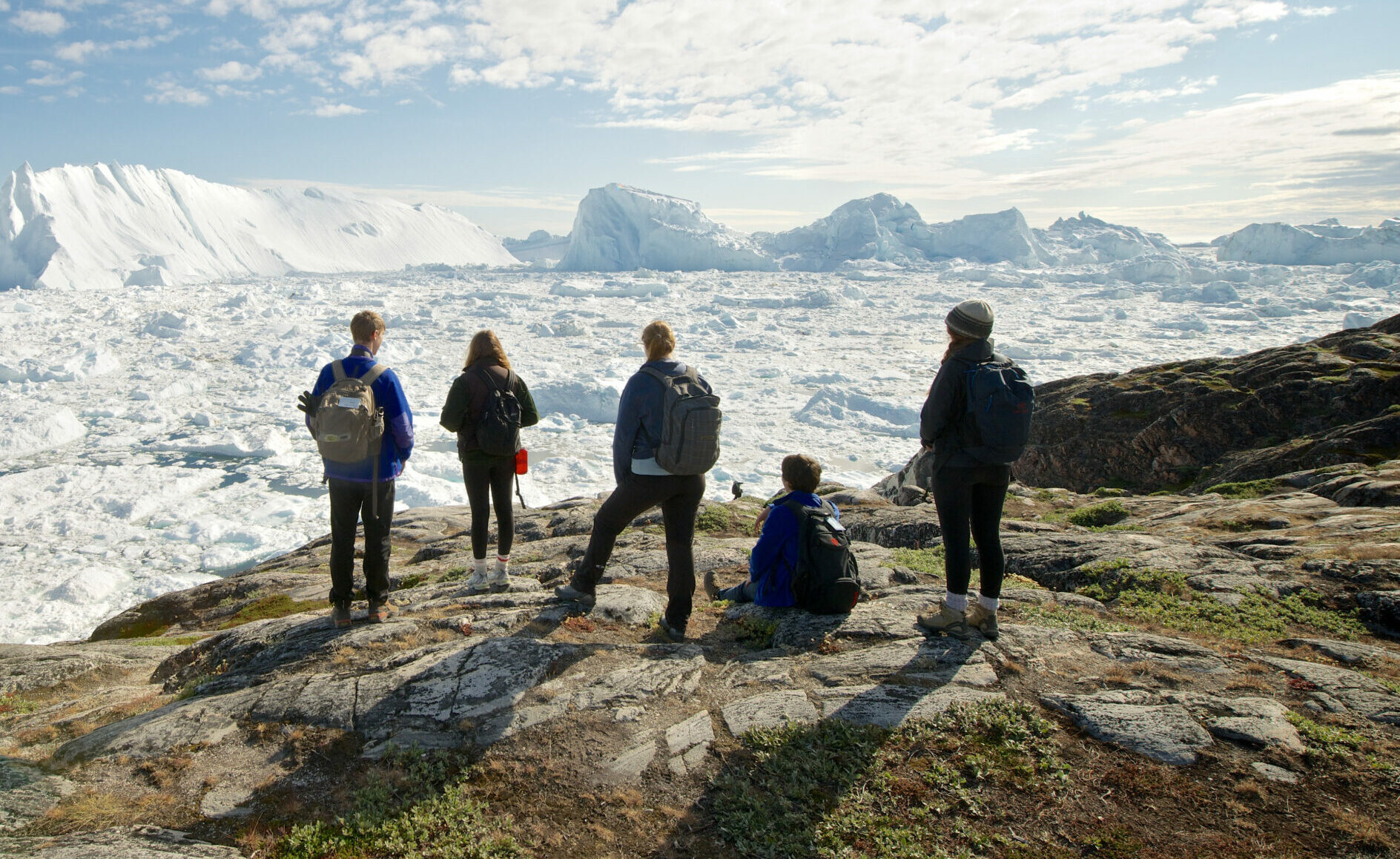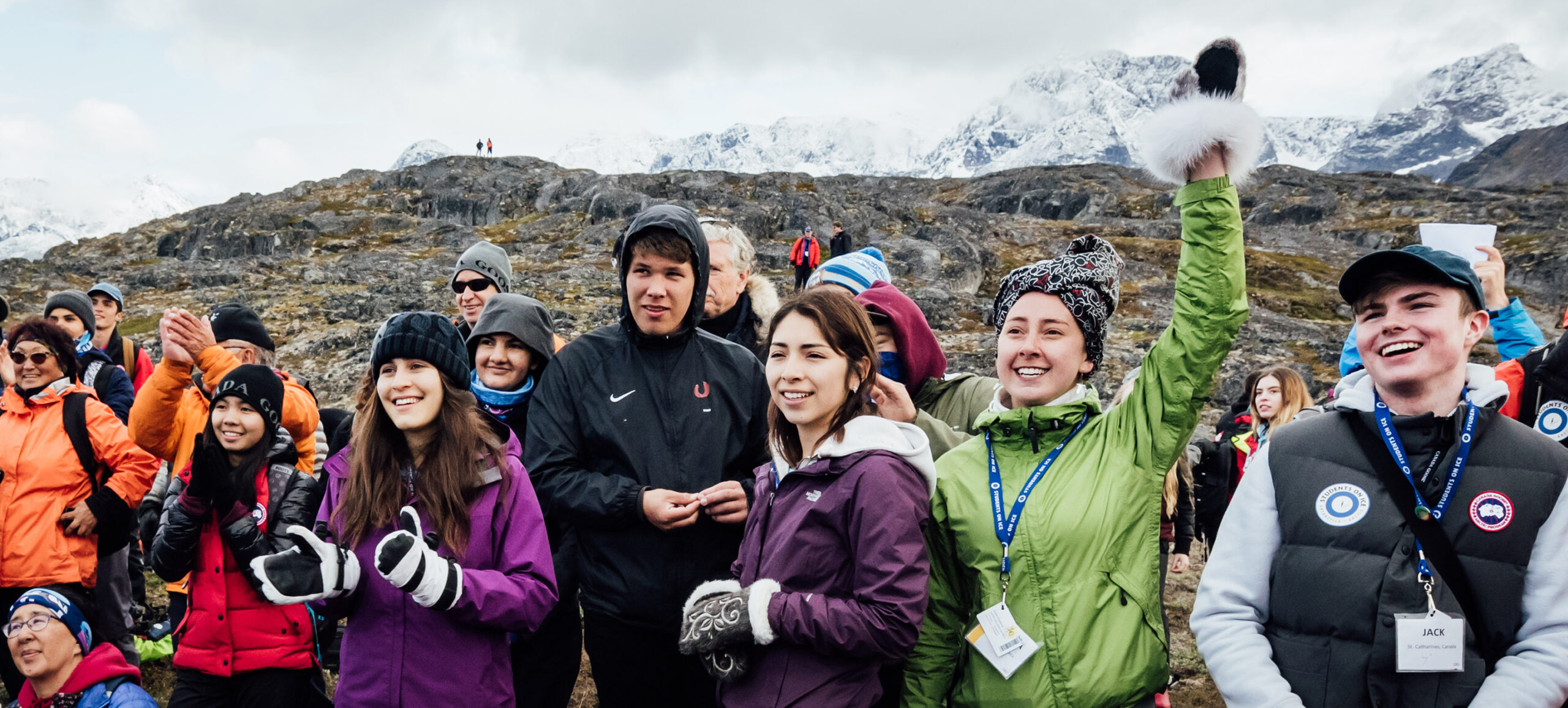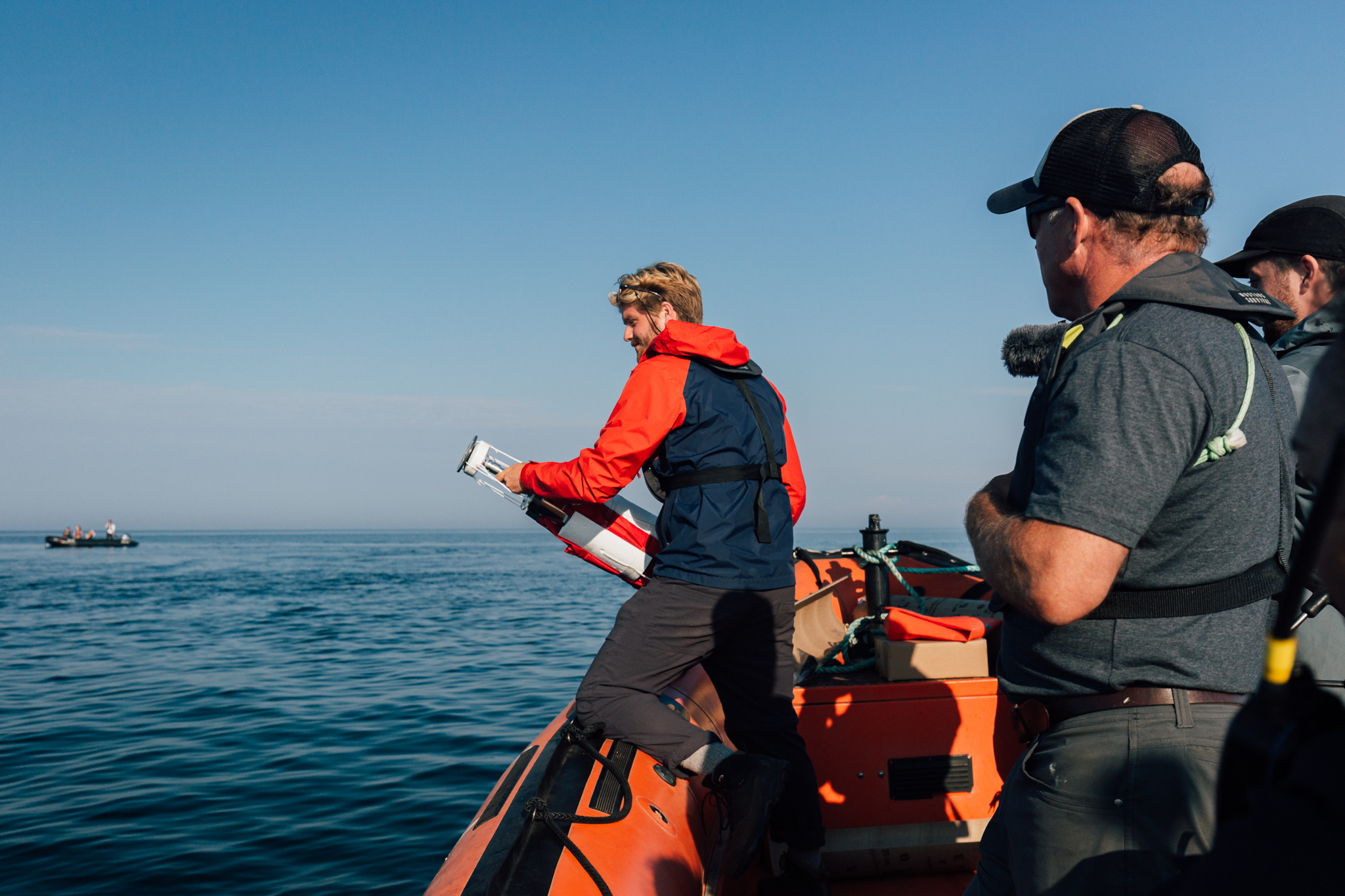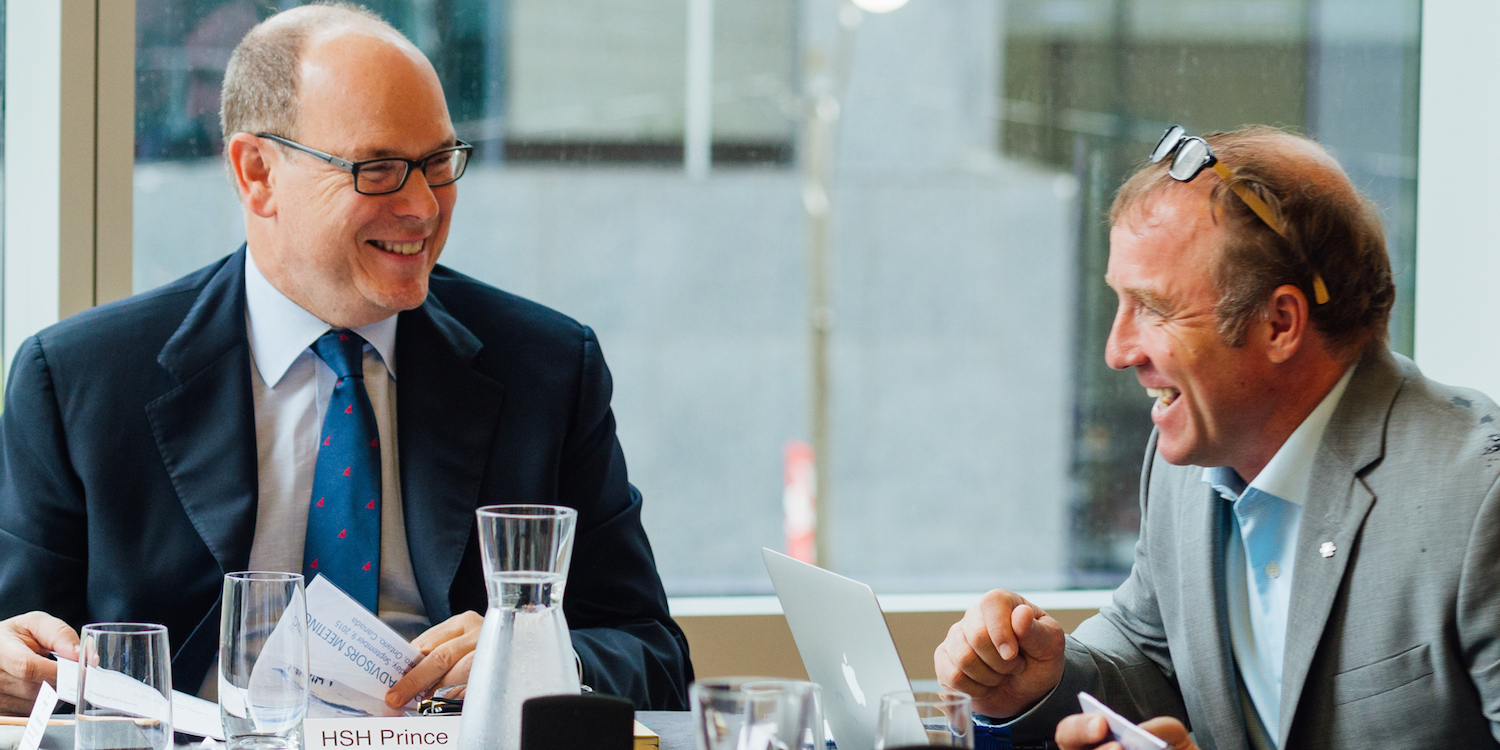Kalaallit Nunaat to Nunavut Expedition: Youth Reflective Blog 2
This blog is a reflective account written by youth participants of the 2024 Kalaallit Nunaat to Nunavut Expedition. Through their collective voices, they share experiences, challenges, and the meaningful connections they made throughout the journey.
Over the last week and a half, we have wrapped up our visit to Greenland and then crossed over the Davis Strait and journeyed westward through Canada’s North. Though the majority of our group calls this country home, we have been struck by the beauty of the tundra, unlike anything we have experienced elsewhere.

We hiked up King George Mountain in Arctic Bay, visited bird cliffs around Prince Leopold Island, and witnessed glaciers at Croker Bay. Even though this landscape can seem stark, unmoving, and timeless, we have become aware of the incredible forces of rock and water constantly reshaping the landscape, and of the biological cycles that are essential to life in the tundra. Along the coast of Qeqertarsuaq in Greenland, we cruised around basalt column formations and through caves carved by waves on a Zodiac tour. In Croker Bay, we were fortunate enough to go on a helicopter ride around massive glaciers that were part of the Devon Ice Cap, and view the cracks forming in the glaciers. These cracks, combined with the slow movement of the glacier towards the sea, eventually cause the calving of icebergs.
In conjunction with our observations, our learning this week had a major focus on the effects of climate change on glaciers and the subsequent consequences on the Arctic ecosystems. We learned about how glaciers have been melting and calving at a greater rate in recent decades, reducing the glacial ice coverage and contributing to rising sea levels. We also learned how the quantity and thickness of sea ice formed annually has been decreasing significantly due to increased temperatures. This creates a substantial loss of habitat for animals like polar bears.

Given the less-than-positive prospects for the Arctic, many of us have been grappling with how we stay hopeful. One lesson in hope came from a polar bear in Croker Bay we saw eating a seal. We witnessed the bear kill the seal in the water and drag it up an iceberg to eat it. This is an incredibly rare sighting – polar bears typically hunt from sea ice, and as sea ice coverage decreases, so do their hunting grounds.
Polar bears are often portrayed as helpless victims of climate change, so this sighting was an inspiring sign that polar bears are in fact adapting to a changing world. In many ways, this is what we are all attempting to do. Climate change has meant we are not living in the same world our parents grew up in. For many of us, traditional knowledge about living on the land is no longer as accurate as it once was because of rising temperatures and increasingly unpredictable weather. We must all find ways to adapt; just because it is going to change doesn’t mean we should give up.

So where does hope come from? There are many answers to that question, and one we have discovered in particular is community. The communities we have visited in Nunavut, particularly Pond Inlet and Arctic Bay, have shared their hope with us through throat singing and drum dancing as a testament to their resilience through time and their continued pride in their culture today. These communities are also advancing conservation initiatives through co-management agreements to protect the lands and waters of the Arctic on their own terms. A recent example we learned about was the agreement that governs the Tallurutiup Imanga National Marine Conservation Area, which is led by a board made up of equal Inuit–Canada representation that makes consensus-based decisions while taking Inuit Qaujimajatuqangit into account. This approach not only ensures that traditional Inuit knowledge and perspectives are integral to the management process but also fosters a collaborative relationship that respects and integrates both Indigenous and scientific insights.
We’ve also found much hope within our own community. Based on each of our work in the field or in our studies, we all deeply care about Arctic ecosystems and communities and, more broadly, the state of the planet. It’s exciting for us to see more opportunities to voice our hopes for the future, both on this expedition, and beyond. As we engaged with and learned from the diverse voices within these Arctic communities, we were inspired by their resilience and innovative approaches to environmental stewardship. This experience has ignited a shared commitment among us to advocate for sustainable solutions and contribute to a positive impact, ensuring that the lessons we’ve learned translate into meaningful action for the preservation of our planet.
